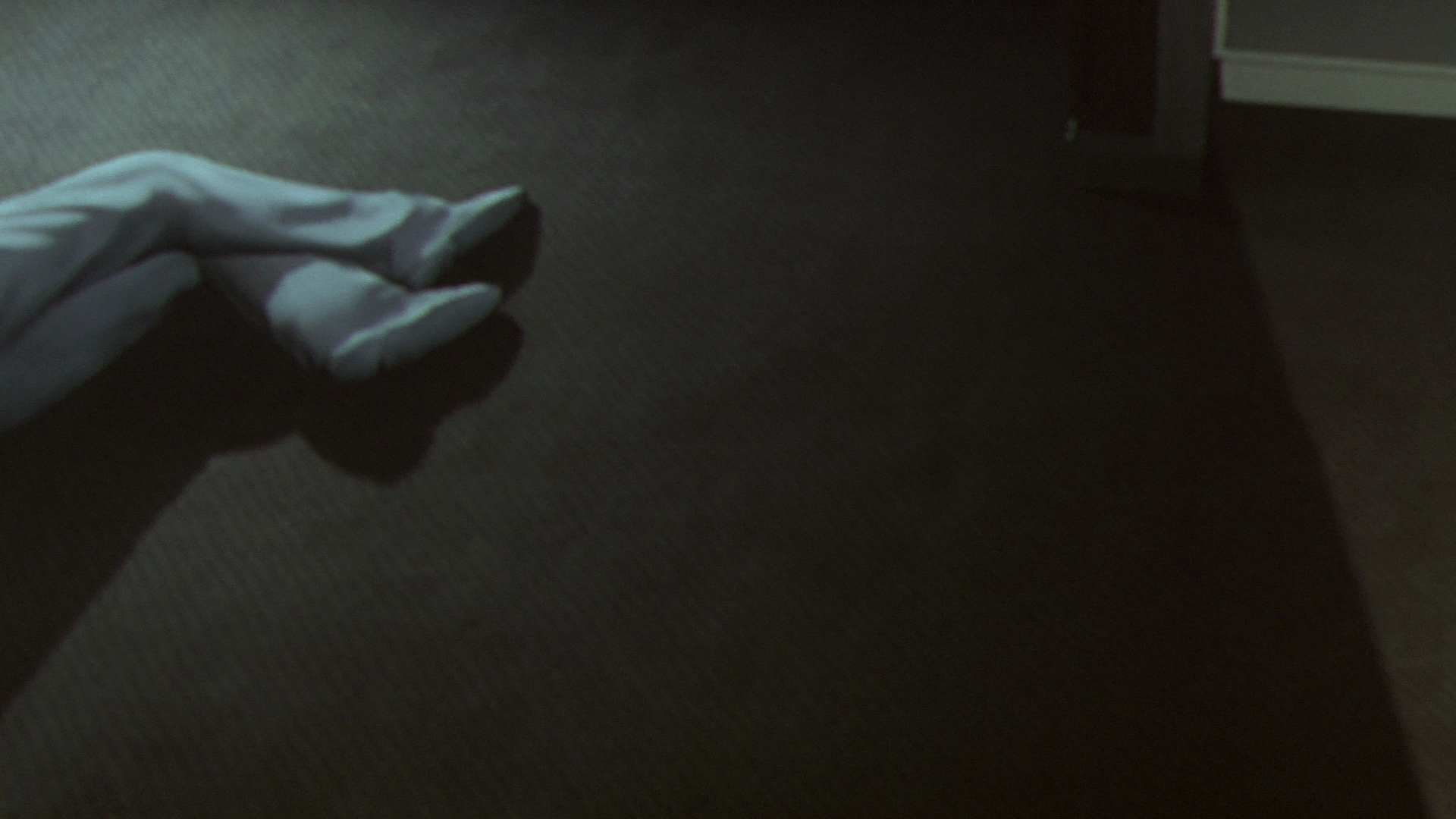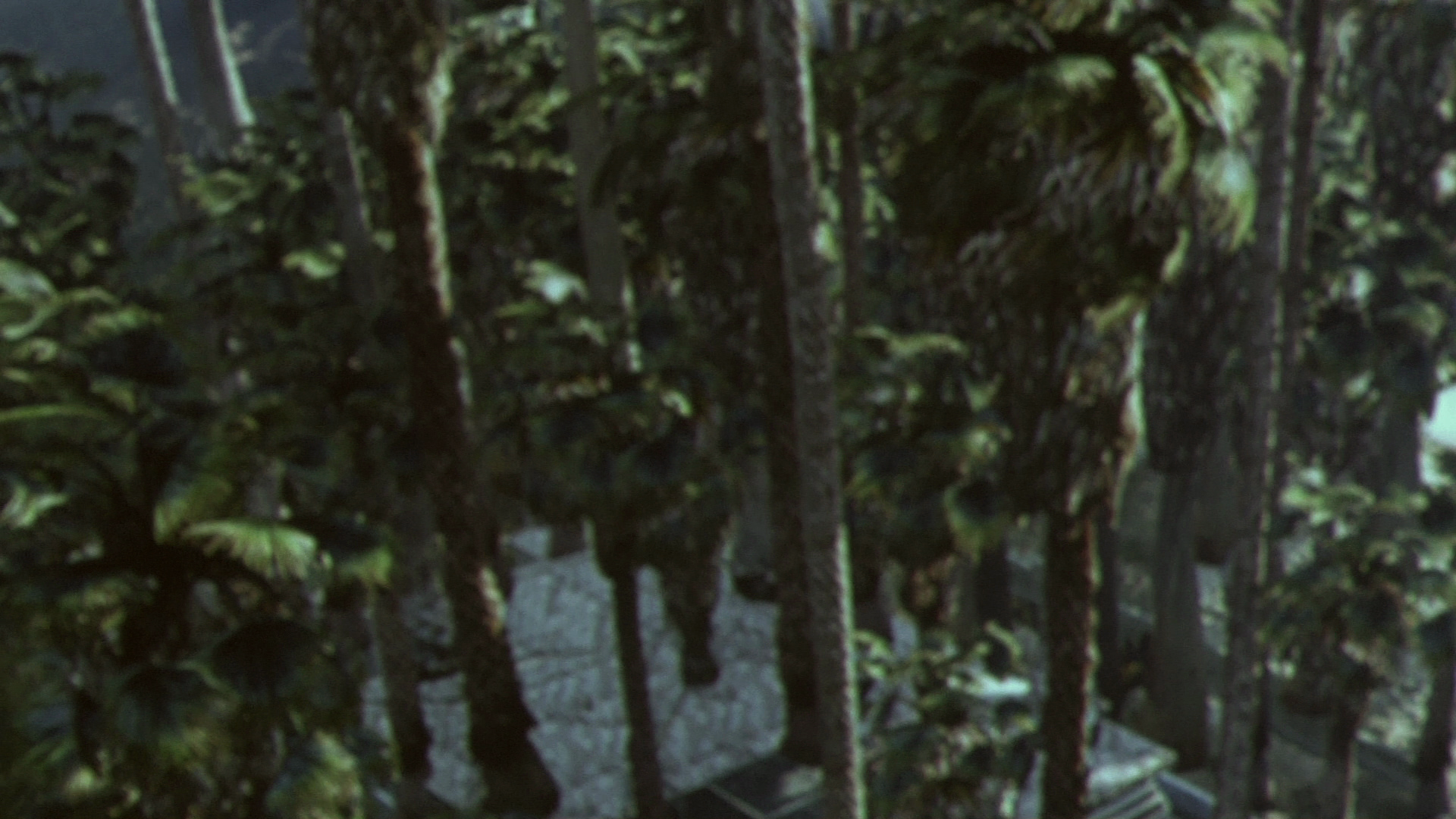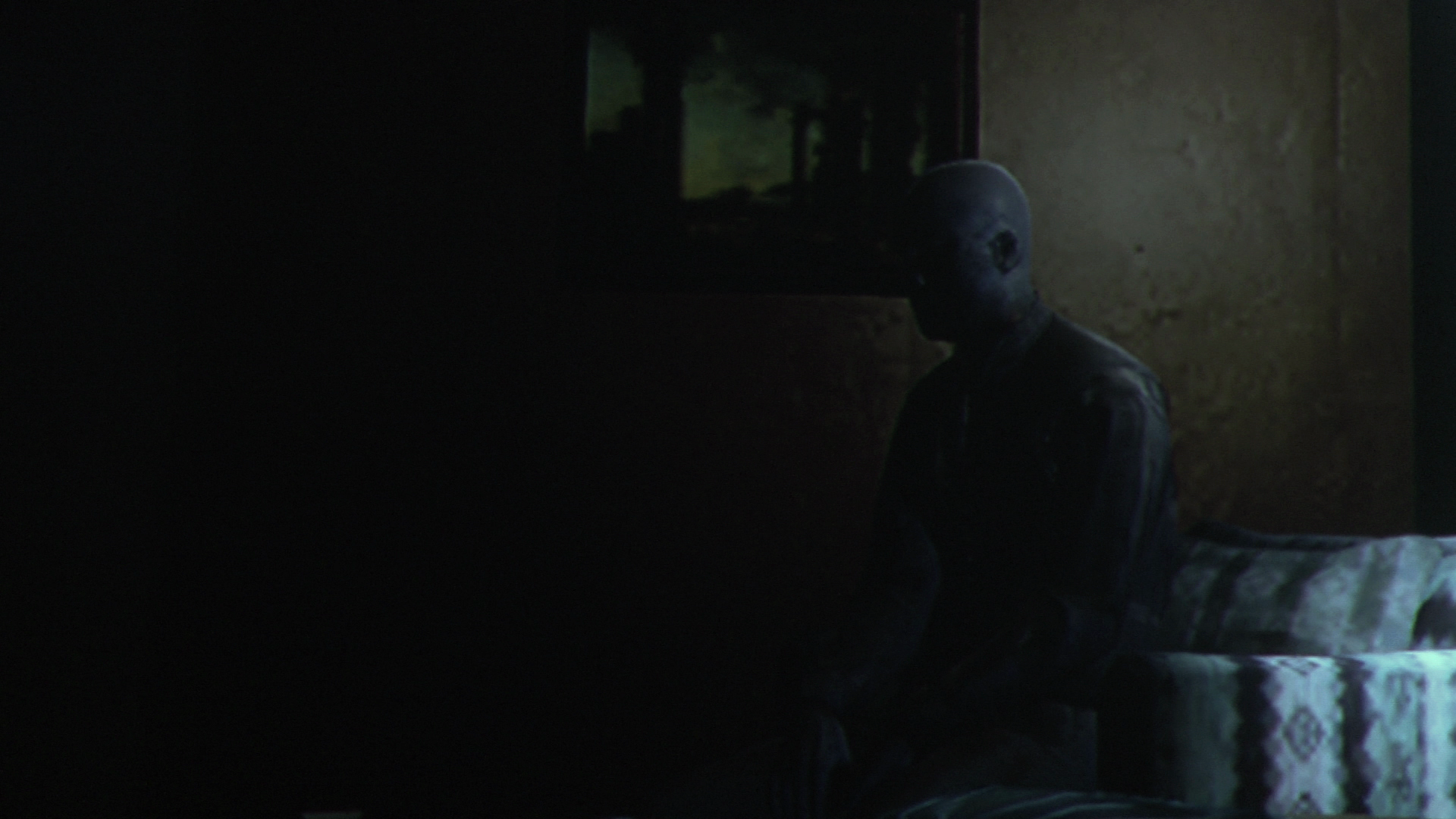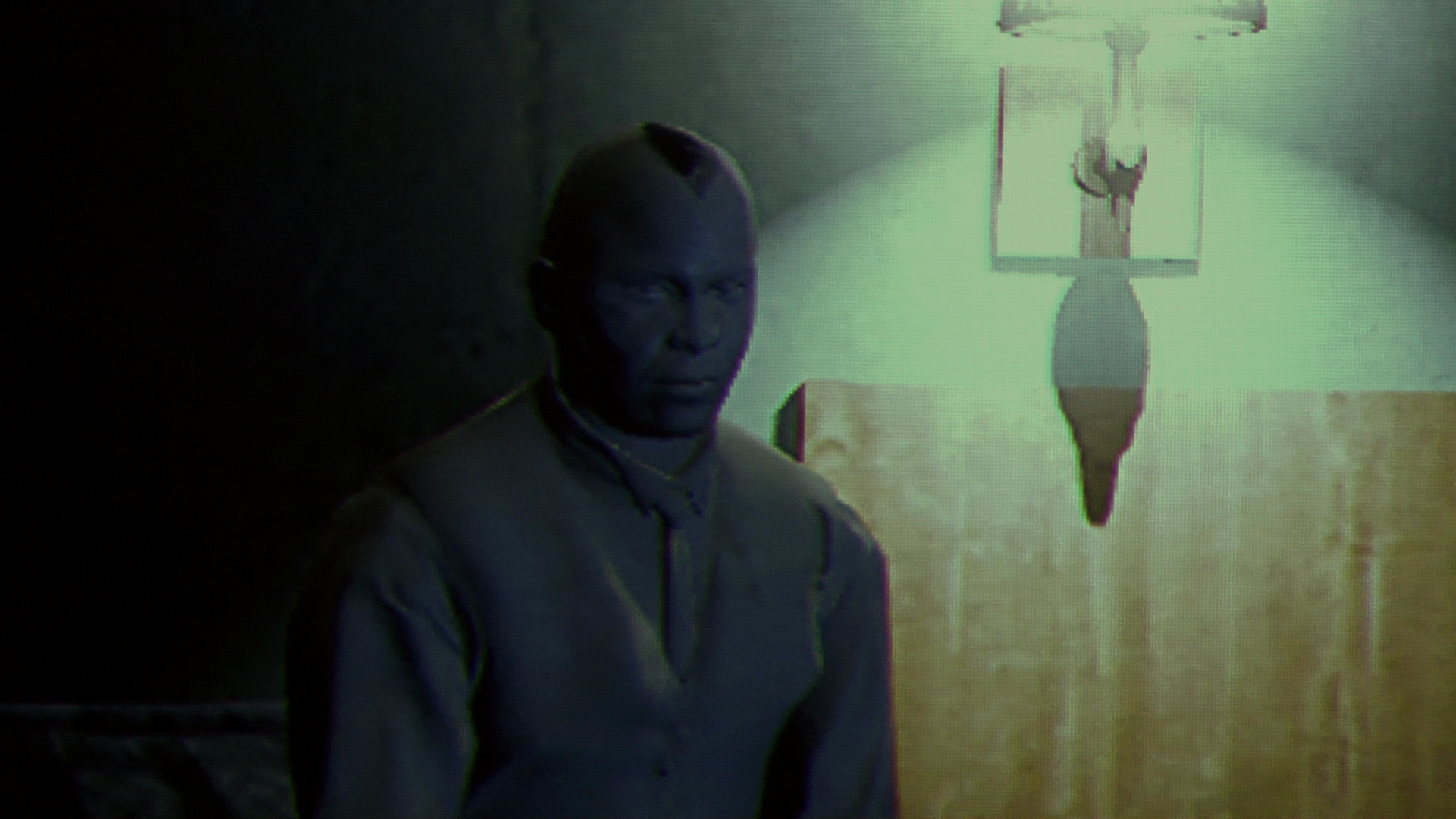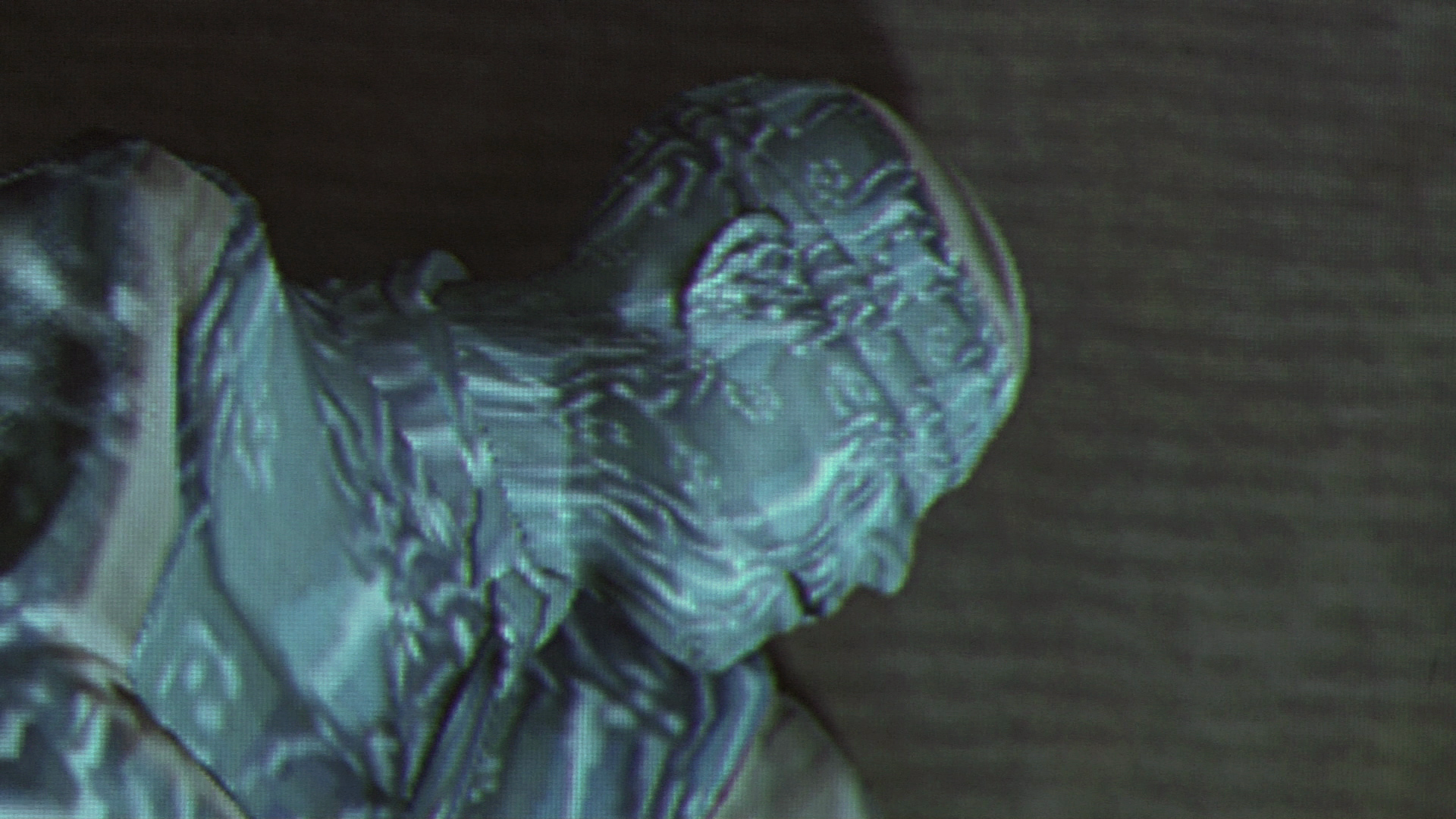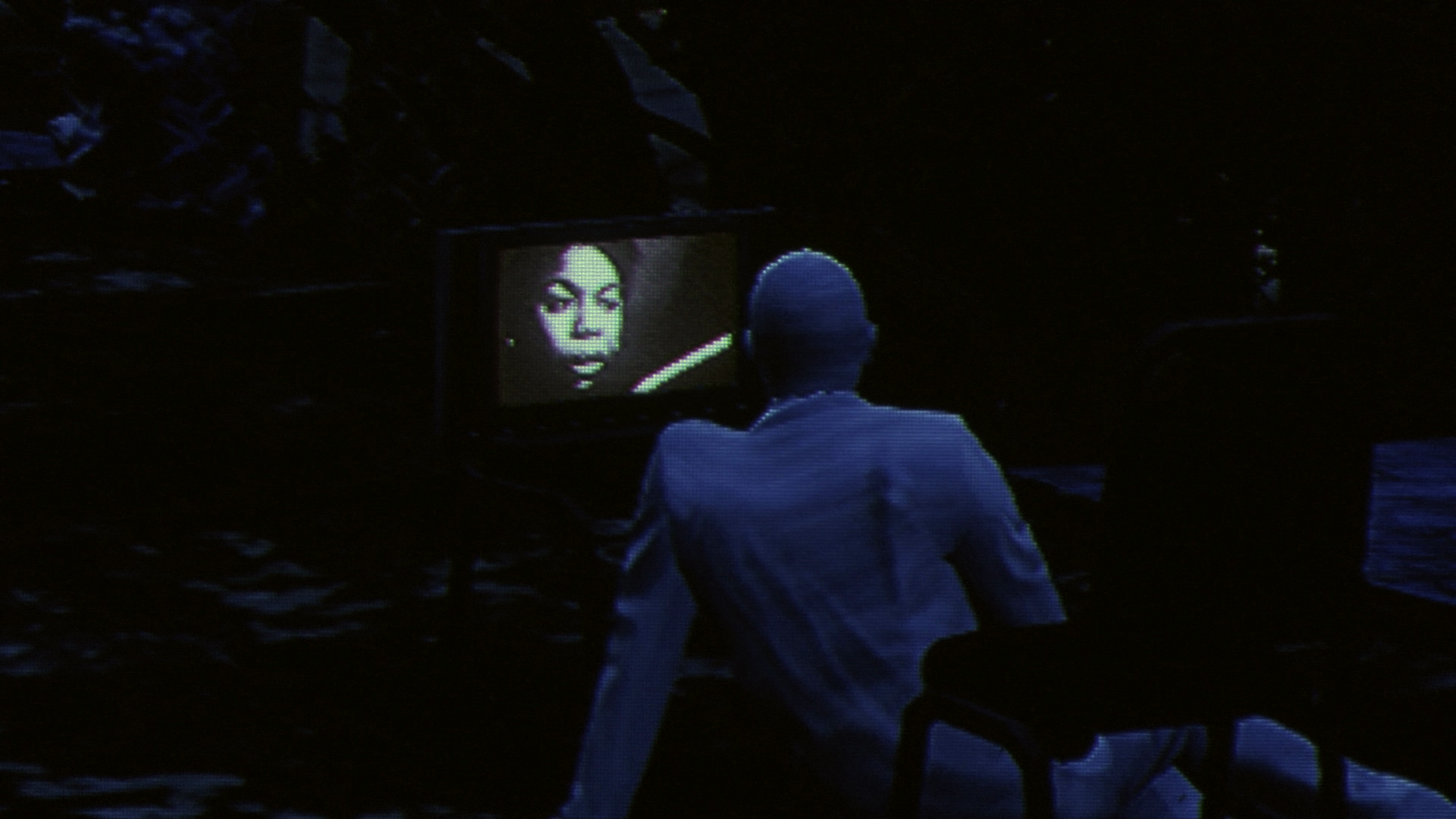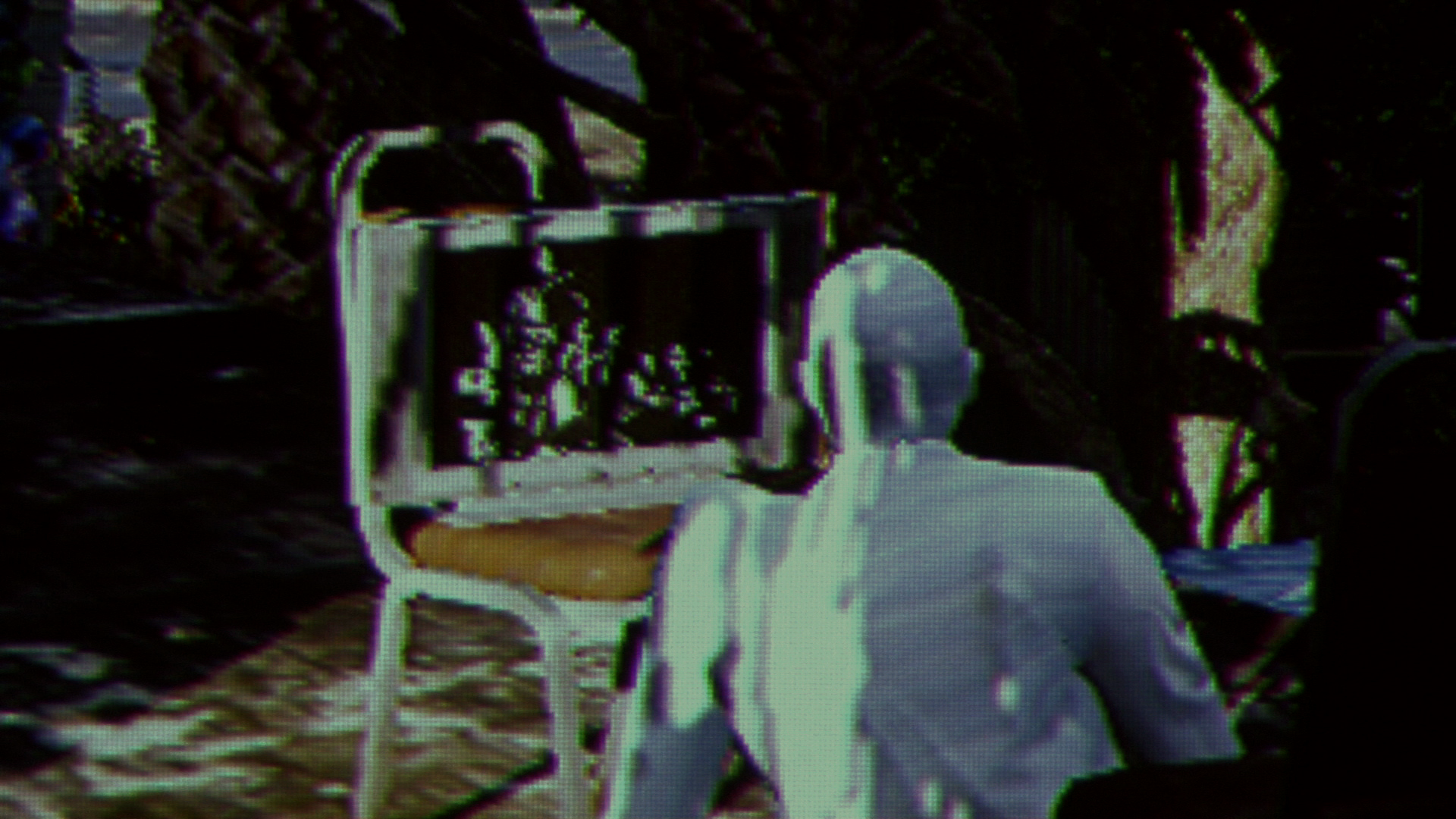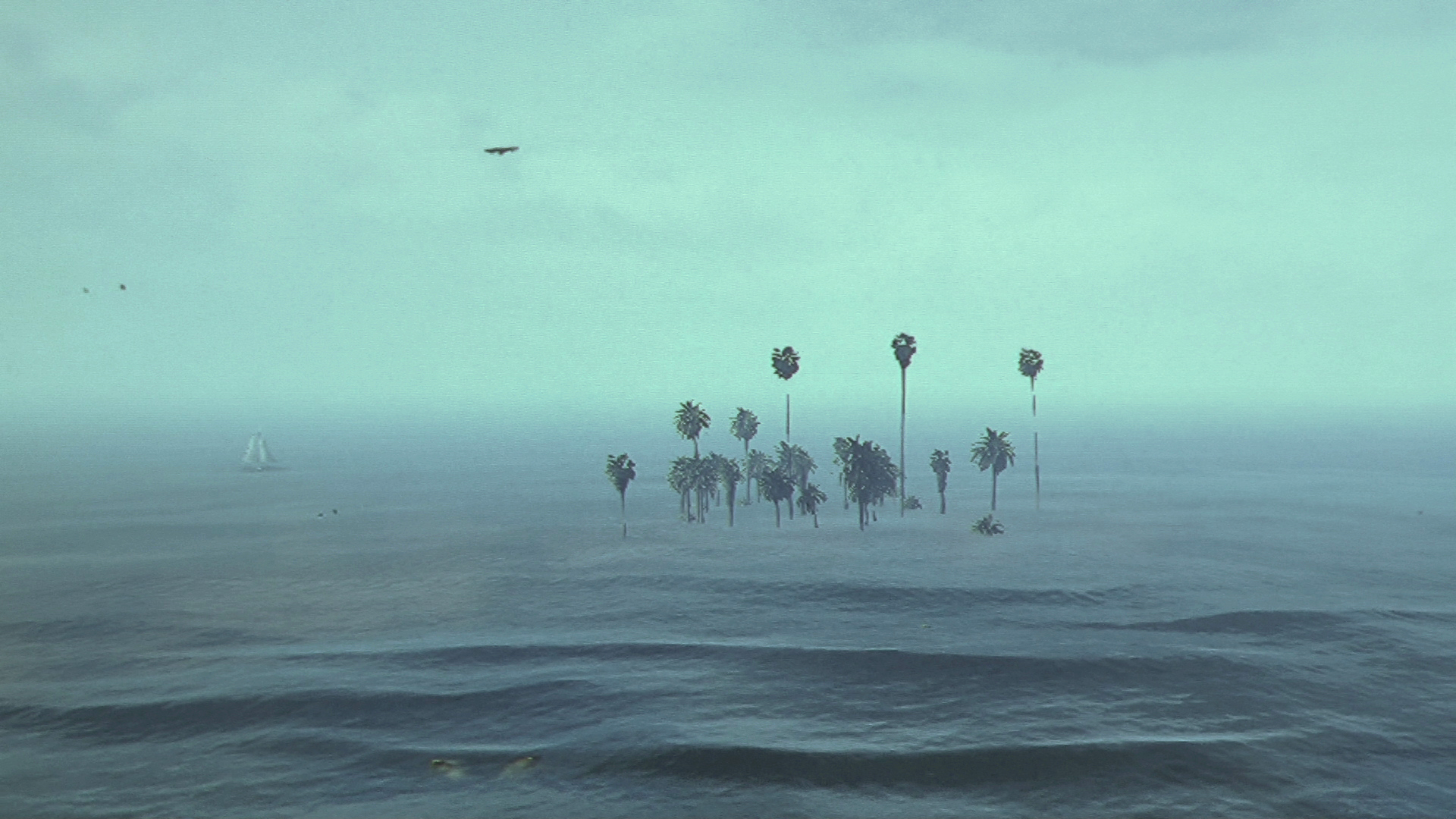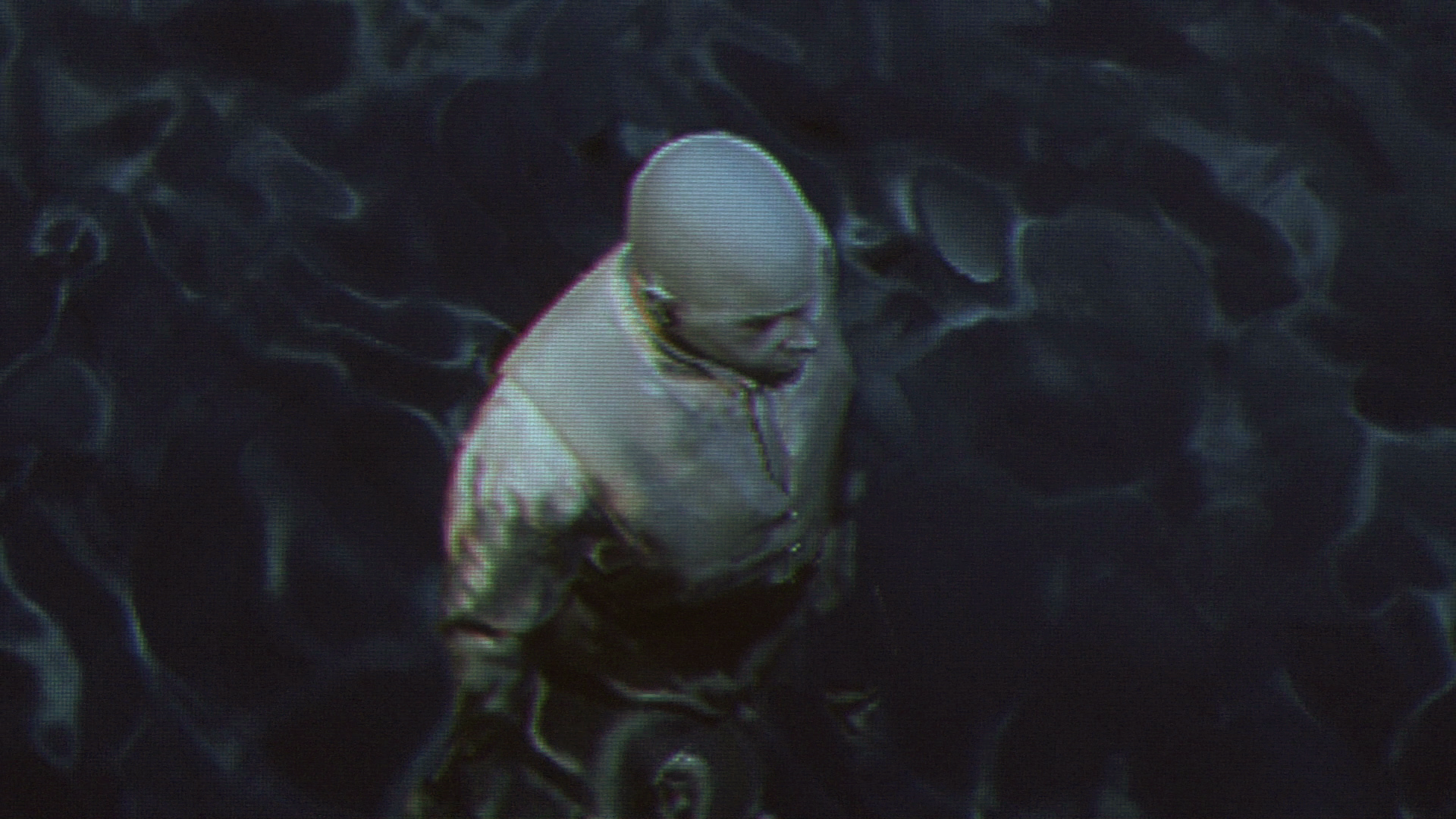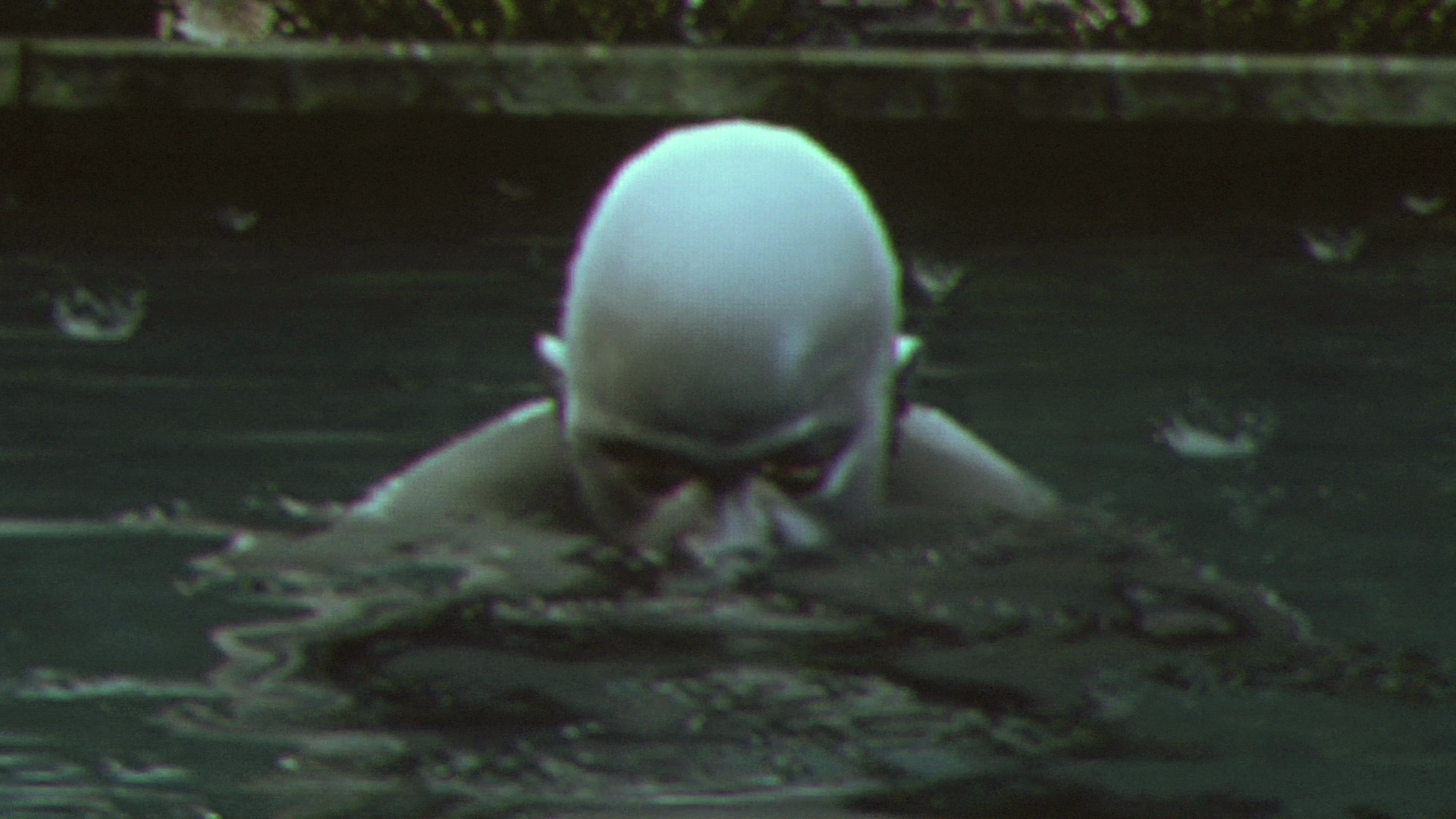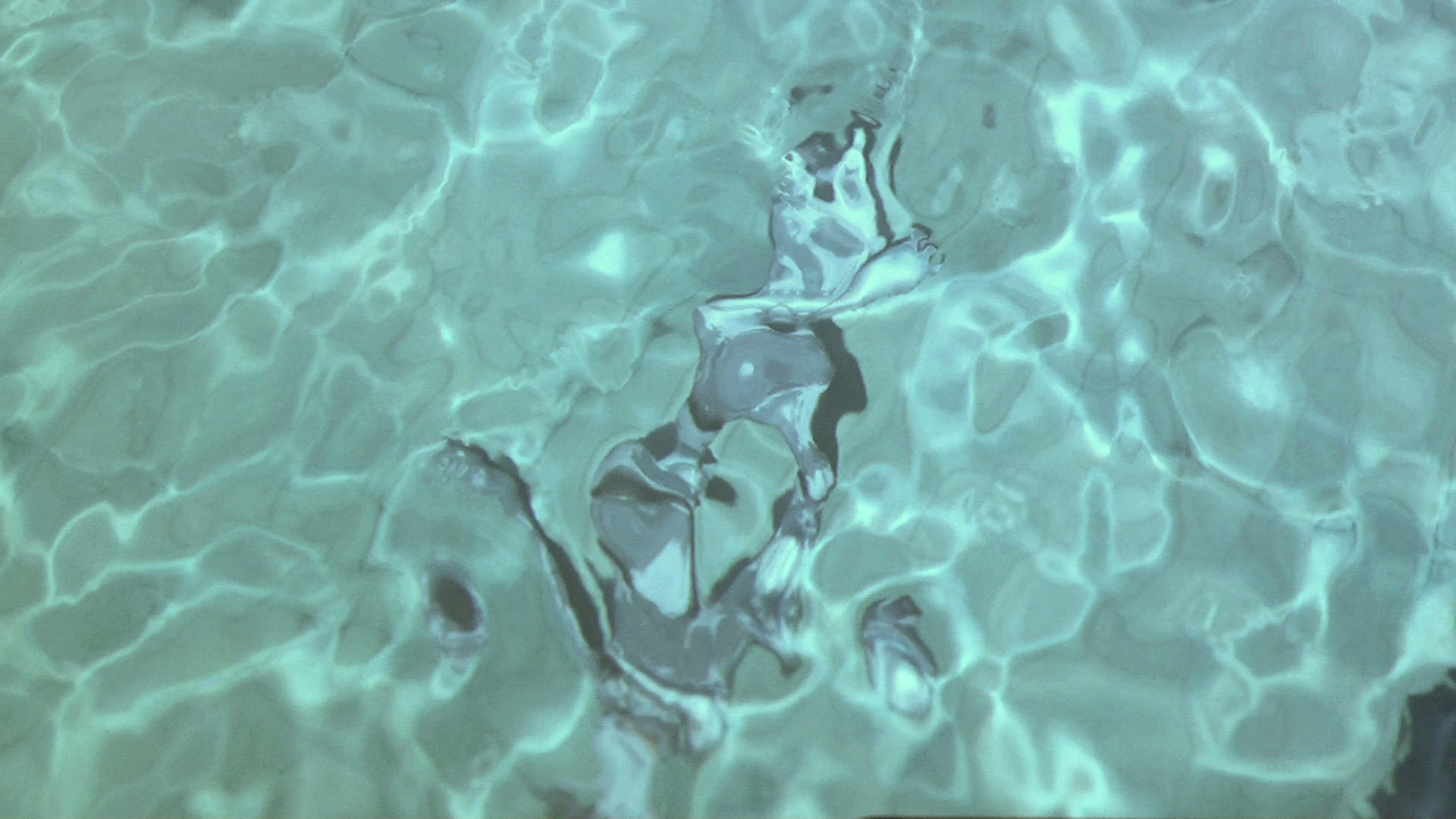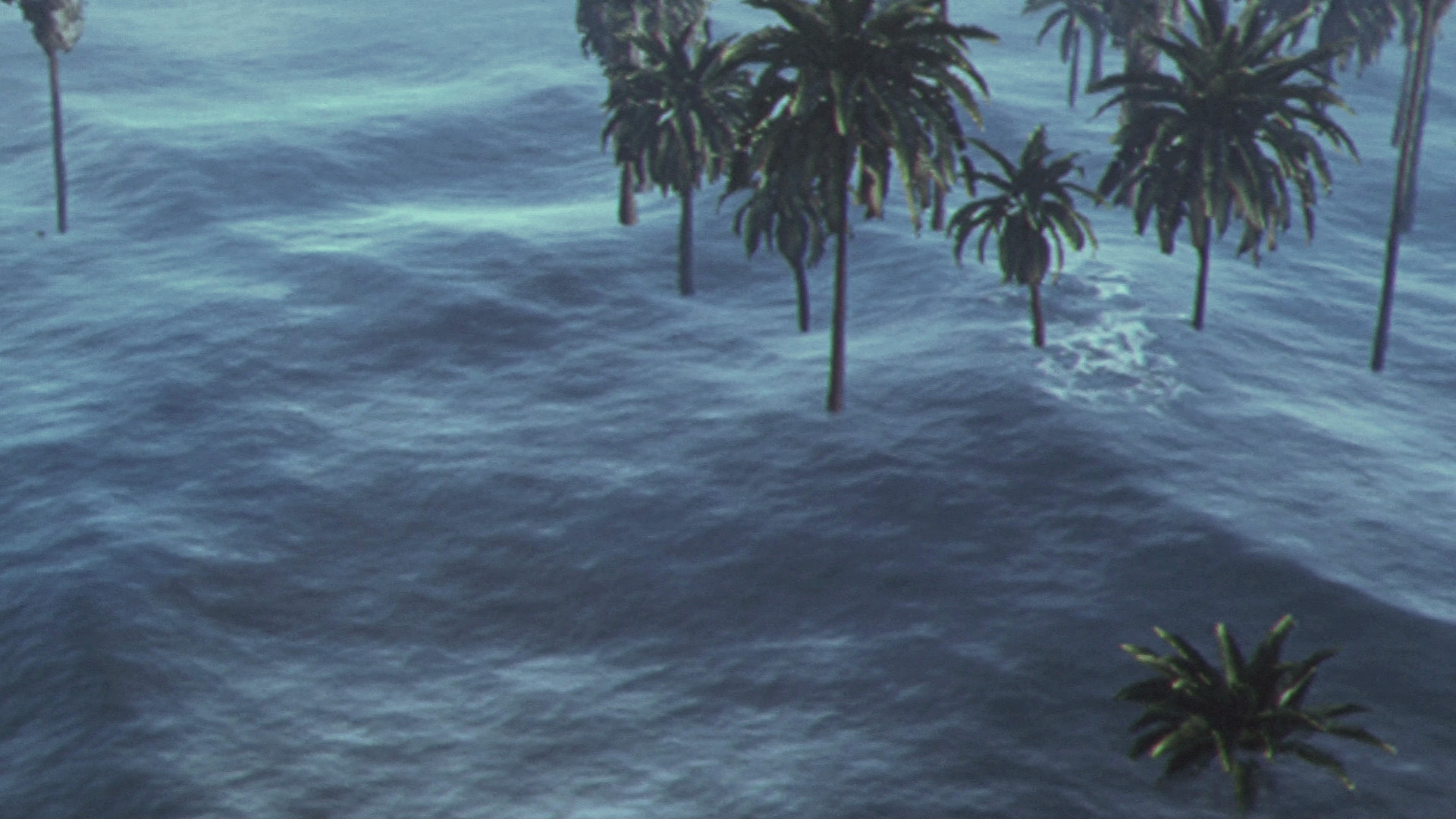This water gives back no Images
3-channel video installation, 6:12 min, loop, 2017, Germany; hereby presented as a single-channel digital video
Created by Aleksandar Radan
Originally conceived as a 3-channel video installation, This water gives back no Images features a lush, tropical digital landscape created using modified scenes from Grand Theft Auto. We see palm trees bending in the wind and hear soft rustling sounds and bird chirps. An avatar moves through this landscape, wading into the water. As it bathes, the figure seems to dissolve into the ripples and reflections in the water, its contours blurring into the surroundings. About halfway through the video, a grainy black and white recording of Nina Simone singing “Images” (1966) appears embedded within the video game aesthetic. This water gives back no Images questions notions of identity and reflection within an increasingly digital world.
A German artist born in 1988, Aleksandar Radan studied at the Hochschule für Gestaltung Offenbach. His work explores digital media, focusing on themes of technological disconnection and virtual identities. Radan alters computer game environments through modding, filming live action footage within the modified spaces. His experimental short films juxtapose programmed avatars with improvised gestures, bringing the virtual and physical worlds into collision. Radan’s works have been exhibited internationally, including at the Clermont-Ferrand International Short Film Festival and Oberhausen International Short Film Festival.
Matteo Bittanti: In This water gives back no Images, the vintage Nina Simone footage generates a visual “interference” from the analog world within the digital landscape. What interests you about bringing together and juxtaposing different media textures and temporalities? What new meanings emerge from the friction between old and new?
Aleksandar Radan: Of course, at first glance, one can say that these are different media textures, in this case one could categorize the recordings of Nina Simone and those in GTA as well as old and new. In the end, this doesn’t make a difference to me in this work. I belong to the generation that doesn’t really see a difference there. The first time I saw Nina Simone was on YouTube. I only know her in pixels. For me personally, these so-called worlds have always belonged together. In my animated films, I work without a script or storyboard; I never had the intention to deliberately juxtapose something. I moved in virtual space and happened to be listening to Nina Simone on loop for weeks. And as it sometimes happens, everything comes together in a moment, and it feels just right. Of course, before this relatively short moment of creating artistic work, there is an engagement with various topics, whether it's literature, conversations, lectures, films, or anything else.
Matteo Bittanti: The avatar lacks a distinct identity, shifting between different textures and appearances — unless it is William Waring Cuney’s doppelgänger…You’ve spoken before about avatars as pioneers into new virtual frontiers rather than mere placeholders. Could you expand more on how you see avatars exploring the possibilities of identity? What does it mean for identity when virtual bodies are so malleable, unstable? How does the widespread availability of AI bots contribute to this evolution or revolution?
Aleksandar Radan: Avatars in virtual worlds and their malleability provide fantastic opportunities to visualize one’s own state of identity. Perhaps the characters we control do it just like our biological bodies, only faster. As if we’re not constantly changing. Through the avatar, we explore not only the simulated world in the box in front of us, but at the same time, it also ventures somewhere deep within us. This is something that I better illustrated with my 2015 work In between identities.
Matteo Bittanti: Water carries symbolic weight and, in this piece, seems to represent dissolution of identity and blurred boundaries between real and virtual. It gives life, but it can also take away life from living beings. Can you discuss more your conceptual interests around water and how it ties to themes in your practice?
Aleksandar Radan: Water as a theme offers incredible possibilities for interpretation. At one point, it became clear to me that this piece could only function as a commentary on the poem “No Images” by William Waring Cuney, beautifully interpreted here by Nina Simone. I believe I was at a party and the DJ played a remix version of a Simone’s song, which was terrible.
I struggled with the idea of simply placing this song in the film, but then I thought about how beautifully it can address the questions of our present time. Until then, there had never been music in my films, and well, it wasn’t really traditional film music either. I just wanted to make a humble attempt, perhaps even a bit playful, to bring a strong lyrical, and later also performative, element into my creative space.
To get back to the question... There are different bodies of water in this piece. Large oceans and small ponds.
Matteo Bittanti: Indeed. The inclusion of Nina Simone’s haunting rendition of William Waring Cuney’s poem “No Images” (1922) adds such a rich layer of meaning. In lamenting the loss of connection to nature and inability to see one’s true reflection in the urban environment, the song speaks profoundly to the ruptures between our digital and natural worlds. Could you talk more about your thought process behind incorporating this song? How do you see it deepening the ideas around fractured identities, technology as a distortion, and the loneliness of urban digitized life in your own work? Simone’s performance itself also straddles digital and analog – it was recorded in the 1960s yet feels timeless. What drew you to juxtapose something so human and analog-textured amidst the lush digital landscape? Overall, how do you see the themes of Cuney’s poem resonating with and adding new dimensions to the visual narrative you’ve created? Are “palm trees” possible only in the virtual sphere and inaccessible IRL? Or, to put it like the Situationists, “Sous les pavés, la plage”?
Aleksandar Radan: I really don’t want to presume to interpret Nina Simone’s intentions in her rendition of the poem. I believe she performed the poem in 1965, during her European tour, and she was a black woman.
Matteo Bittanti: Can you discuss more about your process of modding for this project, and more in general, in your practice? How did you go about altering the original landscapes and textures of the game? What creative opportunities did this hacking/modding open up for you? What can game modding do that more traditional animation cannot? When we last talked, in 2020, you mentioned that you consider the tool – game engines, modding etc. – almost irrelevant compared to the poetic component informing the work. Have you changed your mind since then?
Aleksandar Radan: Modifying these already functional landscapes greatly accelerates the process. It’s just something completely different than spending several years on planning and execution for a ten-minute animated film. It’s closer to me as an artist; I am alone, I don’t need a crew, and I can surprise myself. It’s more like a research journey that I can ultimately take my audience on. :)
My work is probably still considered irrelevant today. Modding was initially a means to quickly and uncomplicatedly complete my minor subject for my diploma within a week. However, I quickly realized that there is a unique tension in the works when they are created in this way.
Matteo Bittanti: This work was originally conceived and presented as a 3-channel installation: images were projected on three surfaces that could not be viewed at once. You often create experiences that require viewers to continually refocus their perspective and expectations. What interests you about immersing audiences and asking them to reconsider vantage points? How does your work speak to perspective and bias more broadly? How does This water gives back no Images change from its original iteration into a single channel video?
Aleksandar Radan: I believe I wanted to give the singing of Nina Simone, and everything it carries with it, a small isolated space. In the film version, it already works well because there are no interruptions and it’s really clear that the film pays homage to this moment. In the three-channel installation, one will eventually wander around, lose sight of the images, and only follow the singing. I found this idea beautiful.
Matteo Bittanti: A recurring theme in your work is the notion of “lagging behind” in digital spaces. How do notions of disconnect and disorientation in digital spaces play out in this work? Where do you see moments of friction where the human meets the machine?
Aleksandar Radan: It sounds like I know what I’m doing, like I’ve been doing it for a long time. The feeling of lagging behind — by the way, in German, this term can also allude to the limits of the biological body — is something that haunts me in most aspects of my life. Perhaps it’s best if I recommend a good book on the subject,Trauma im Computerspiel, Mediale Repräsentationen mentaler Extremerfahrungen by my friend Thomas Spies. He answers these questions much better than I do :)
This water gives back no Images
3-channel video installation, 6:12 min, loop, 2017, Germany; hereby presented as a single-channel digital video
Created by Aleksandar Radan, 2017
Courtesy of Aleksandar Radan, 2023
Made with Grand Theft Auto V (Rockstar Games, 2013)


